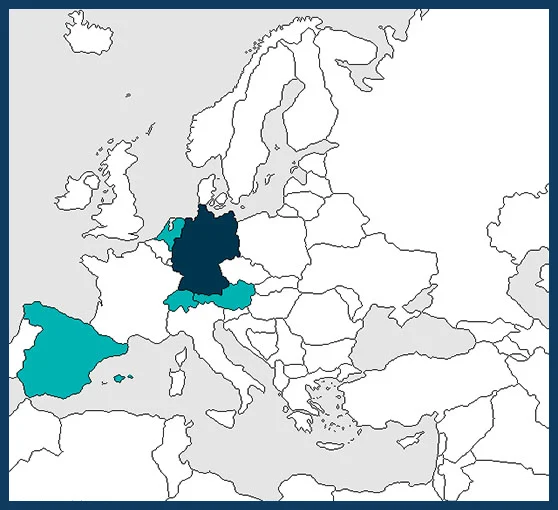04-2015 to 03-2018
€ 1 295 243
Prof. Dr. Martin Volk
martin.volk@ufz.de
Helmholtz-Centre for Environmental Research – UFZ, Leipzig, Germany (Coordinator)
BOKU – University of Natural Resources and Life Sciences, Vienna, AUSTRIA
Institute for Rural Development Research (IfLS), Frankfurt, GERMANY
VU University Amsterdam, THE NETHERLANDS
IMDEA-agua, Madrid, SPAIN
Research Centre for the Management of Agricultural and Environmental Risks (CEIGRAM)-Technical University of Madrid, SPAIN
Agroscope, Zurich, SWITZERLAND

World-wide increase in human population, market’s globalization, dietary shifts and urbanization are increasing the pressure on natural resources and have become a high priority on the political and scientific agenda. Most of these processes lead to multiple competing demands for land. The resulting demand- driven land use changes come at a cost in the form of trade-offs between food or bioenergy production, biodiversity conservation and other ecosystem services (ESS) like clean water, erosion control or soil fertility. Understanding and balancing these trade-offs has a high priority on the policy agenda to promote sustainability and avoid undesirable societal outcomes. By assessing and governing synergies between food production, biodiversity and ecosystem services, TALE will develop related strategies.
Main objectives of TALE are i) to disentangle and quantify the multifaceted links between agricultural production, biodiversity and ecosystem services in different European landscapes; and ii) provide a learning environment that supports the design and evaluation of policy options particularly regarding the Common Agricultural Policy (CAP) that can help to reconcile conflicting demands, namely the production of agricultural commodities while at the same time ensuring the provision of ESS and conservation of biodiversity.
TALE addresses the effects of different land use structures and land use intensities in a set of agricultural landscapes using selected site-specific measures of biodiversity and ecosystem services (ESS) indicators. Main aspects include the identification of (a) synergies and quantitative trade-offs between ESS, biodiversity and agricultural production at different scales; (b) how agricultural production, ESS supply and biodiversity conservation, as well as the synergies and trade-offs between them, might change under different scenarios representing various land use strategies, climate change conditions and objectives across scales; (c) those land management strategies and policy instruments that could help to reduce trade-offs between ESS and biodiversity conservation in the different regions.
TALE will analyze policy frameworks that impact land use decisions regarding agricultural use, biodiversity conservation and ESS supply in five different study areas. The environmental settings in these areas will be characterized, and the status of biodiversity conservation and ESS provision will be identified and quantified by developing and applying different bio-physical, bio-economic and statistical models.
Relevant stakeholder groups will be involved within the study areas to analyze expectations and perceptions on policies, biodiversity and ESS objectives. The development of a learning environment that serves as a platform for integration and exchange between partners and stakeholders will facilitate the dissemination of results. Specific parts of the learning environment will be designed to make TALE methods and results available to the wider public, including decision makers and practitioners, but also fellow scientists and students. Besides project reports and scientific publications, the learning environment can include tools, decision trees, webinars, tutorials, etc. Regular stakeholder workshops will be used to collect insights on user needs regarding the communication of results, which will be complemented by needs from the wider user group through interactive web communication tools (e.g. blog, forum, online survey). Together, this will ensure project outcomes are made available in a way that facilitates uptake in practice and decision-making.